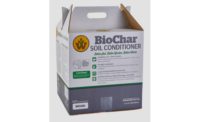DS Smith, a sustainable packaging company, and Aquapak, a developer of biodegradable polymers, have announced a partnership designed to develop the next generation of packaging solutions, a fully recyclable packaging alternative to non-recyclable plastics.
With the pilot period complete, the companies are now working on practical applications of the combined, biodegradable materials with a focus on recyclability and performance. It will include a range of packaging solutions where traditional plastic films can be replaced with Aquapak’s Hydropol, a biodegradable and water-soluble polymer that will help improve the recycling process and result in less contamination, as it is designed to dissolve completely in warm or hot water.
The partnership has the potential to transform the sustainable packaging market with applications across a variety of industries. Working closely with customers to replace the use of traditional plastics in packaging delivers real solutions to the world’s single-use plastic pollution crisis and supports recycling efforts for both consumers and recyclers.
“Aquapak’s technological advances in novel barrier chemistries combined with our broad range of packaging applications will help us work together to solve many of the most pressing packaging recyclability issues,” said Nick Thompson, materials development director for DS Smith. “The impact will be immediate, and our aims are aligned in bringing a circular solution to recyclable packaging products.”
Mark Lapping, CEO, Aquapak Polymers added, “Our organizations are committed to eliminating plastic-pollution at the source and by working together, we can help speed up the roll out of recyclable, biodegradable packaging that is designed for the circular economy.”
DS Smith’s exclusive partnership with Aquapak will support the company’s long-term sustainability targets, including manufacturing 100 percent reusable or recyclable packaging by 2025. With a focus on tackling hard to recycle items, the adoption of this biodegradable technology will allow for less contamination in both the recycling and paper-making process.




